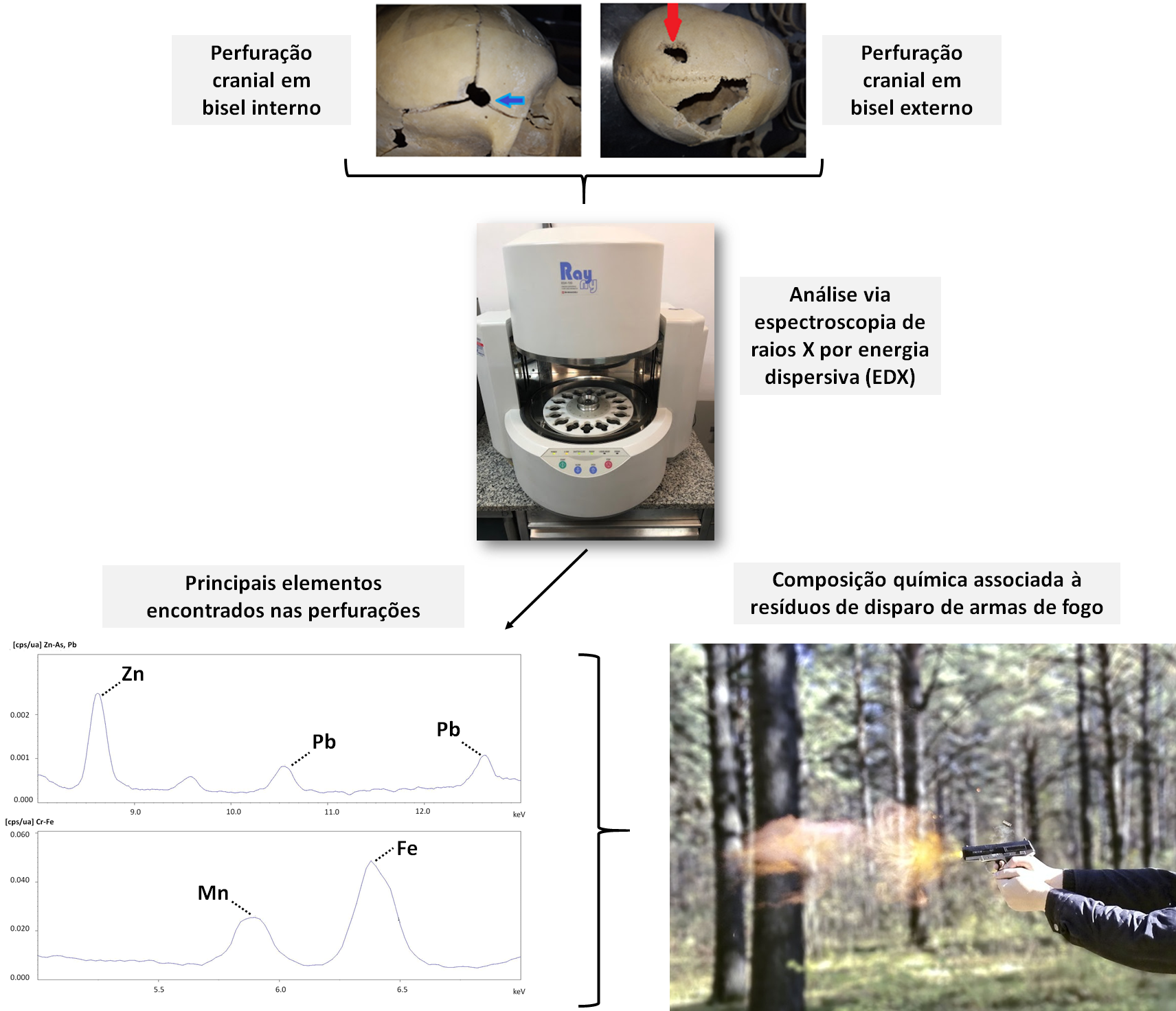IDENTIFICAÇÃO E PROVENIÊNCIA DE FRAGMENTOS METÁLICOS ENCONTRADOS EM CRÂNIO HUMANO VIA ESPECTROSCOPIA DE RAIOS-X POR ENERGIA DISPERSIVA (EDX)
DOI:
https://doi.org/10.36524/ric.v9i3.2211Keywords:
Ciências Forenses, projéteis, metais pesados, chumbo, análise elementarAbstract
The analysis of metallic fragments in perforated bones can determine whether or not there was manipulation of a firearm projectile (FAP). The characteristics of the projectiles, such as chemical composition, substances and residues generated after firing, can contribute to the elucidation of several criminal cases. The objective of this work was to investigate the chemical composition of metallic fragments present in human skull perforations, and to relate them or not to a firearm projectile. For this investigation, energy dispersive X-ray spectroscopy (EDX) analysis was used to obtain the semi-quantitative elemental composition of the analyzed material. The chemical composition of metallic fragments found in cranial perforations was similar to that commonly found in FAP, which have Pb, Cu, Zn and Fe as major elements. EDX analysis is a convenient technique (cost-effective), relatively fast and non-destructive, proving to be efficient in the discrimination of metallic fragments present in the holes of the human skull, being possible to relate them with gunshot residues.

Downloads
Published
Issue
Section
License
Copyright (c) 2023 Revista Ifes Ciência

This work is licensed under a Creative Commons Attribution-NonCommercial-NoDerivatives 4.0 International License.
Autores que publicam nesta revista concordam com os seguintes termos:
- Autores mantém os direitos autorais e concedem à revista o direito de primeira publicação, com o trabalho simultaneamente licenciado sob a Licença Creative Commons Attribution que permite o compartilhamento do trabalho com reconhecimento da autoria e publicação inicial nesta revista.
b. Autores têm permissão e são estimulados a publicar e distribuir seu trabalho online (ex.: em repositórios institucionais ou na sua página pessoal) a qualquer ponto antes ou durante o processo editorial, já que isso pode gerar alterações produtivas, bem como aumentar o impacto e a citação do trabalho publicado (Veja O Efeito do Acesso Livre).


